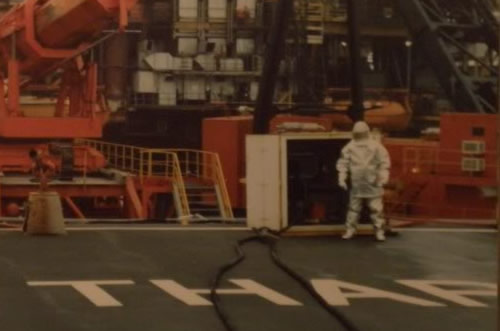Fire-Damaged Car Carrier Morning Midas Shows No Signs of Active Fire
The car carrier Morning Midas, which experienced a fire in its electric vehicle cargo deck on June 3, shows no signs of active fire according to salvage teams that recently...

In October 2009 the Transocean rig Marianas began drilling a well named Macondo, but she suffered damage in a hurricane and was replaced by the Deepwater Horizon. Five months later Macondo exploded killing 11 rig workers and injuring 17 more. But this was not the Marianas’ first brush with disaster.
Originally named the MSV Tharos, the Marianas was built by the famed Red Adair as a firefighting support rig. The rig included space for the launch of helicopters, powerful firefighting equipment and even a 22 bed hospital. These attributes saved lives in July of 1988 when the Piper Alpha production platform exploded in flames and the Tharos was dispatched to rescue survivors.
Today no such platform exists. US Coast Guard officials have testified that launching the first search and rescue helicopter took 24 minutes the night of the Macondo blowout and flight time to the incident location took significantly longer. Once on location, helicopters could only standby for short periods of time before running out of fuel. Eventually the Cutter Zephyr was dispatched to provide a platform for the coordination of efforts but due to her distance from the incident she was slow in arriving.
Last tuesday the oil majors announced a $1 billion plan to build infrastructure and stage equipment for rapid oil spill response in the event of another major blowout. But how much are they spending on infrastructure and equipment for rapid medical and SAR response? Zero.
Maybe it’s time to think broadly on the topic of safety of life offshore and invest in making the workplace safer but also in making lifesaving resources more abundant. Maybe the oil majors should invest $1 billion in an offshore hospital platform complete with advanced firefighting teams, helicopter hanger bays and fueling stations? Or is it too much to expect that injured offshore workers get medical treatment within the golden hour and that helicopters with nightvision, FLIR scanners and other Search and Rescue technology be forward deployed and ready to use?
Just a though. What are your ideas for prevention and response to major emergencies offshore?

Sign up for gCaptain’s newsletter and never miss an update

Subscribe to gCaptain Daily and stay informed with the latest global maritime and offshore news


Stay informed with the latest maritime and offshore news, delivered daily straight to your inbox
Essential news coupled with the finest maritime content sourced from across the globe.
Sign Up